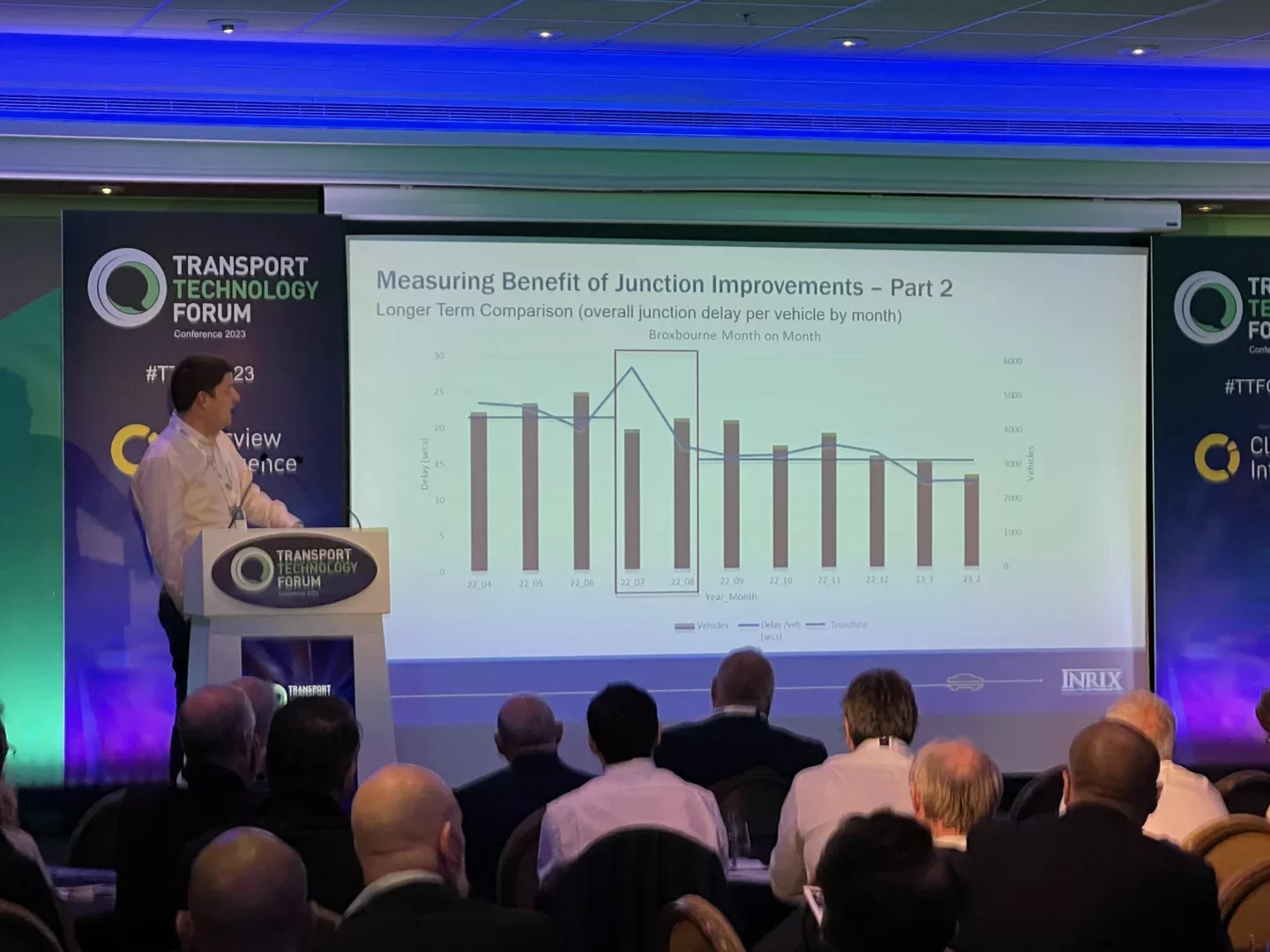The Transport Technology Forum Conference in Leeds has heard how analysis of movements of vehicles by traffic data company INRIX has proved that improvements to junctions made thanks to a Department for Transport grant has shown delays have been halved on a junction in Hertfordshire.
In 2021, 39 transport authorities received a £250,000 or £500,000 extra maintenance grant to improve traffic signals to tackle road user safety, air pollution and congestion and the SPATULA Connected Vehicle Working Group session at the conference heard specific before-and-after evidence that this funding has delivered improvements to journey times, and consequently seen a reduction in emissions.
Dominic Paulo (pictured), a Senior Director at INRIX, revealed that this analysis using the INRIX Signal Analytics gathered from a network of connected vehicles showed an overall 15-40% improvement on all junctions in Hertfordshire where signals improvements had been carried out to improve traffic flow.
During the session George Brown of KL Systems talked about in-vehicle signing, delivering in-vehicle signage without the need to run an app, and a successful demonstration carried out in the West Midlands. He also talked about Portsmouth being a testbed for IVS research where solutions include providing information to drivers based on the speed of the vehicle, or a message delivered when entering or leaving Clean Air Zones.
Group Chair Andy Graham explained how the group is working on connecting vehicles, not just cars, so is concentrating on connected cycles too. Irene McAleese, co-founder of See.Sense explained how authorities can better deliver travel for bicycles by getting more data, so her company gathers floating data using the See.Sense bike light which has advanced sensor technology built in making 800 readings per second to understand swerving and braking patterns, surface conditions and journeys taken. This technology is integrated into e-scooters and bike share fleets to help gather data which is used for, among other things, identifying areas of highway where there is greater danger, allowing for improvements before collisions happen.
The SPATULA group began by delivering Green Light Optimised Speed Advisory, GLOSA, which has been proven to reduce emissions for light commercial and heavy goods vehicles at SCOOT junctions. Graham Seaton from National Highways gave an update on projects to try and get a business case for GLOSA on MOVA junctions as well as SCOOT, detailing a trial carried out on the M5 at Bridgwater in Somerset. He explained this trial established that communications latency causes a performance issue, and more work is needed to make the solution perform adequately, but there is interest from the logistics sector in this service, and scaled up could deliver a commercially-viable product.
“The SPATULA is doing great things with connected vehicles,” Andy Graham explained. “We don’t talk about automation in our group, because there’s plenty of exciting stuff to do with connectivity, and this short summary has proved that.”
(Picture – TTF)






















